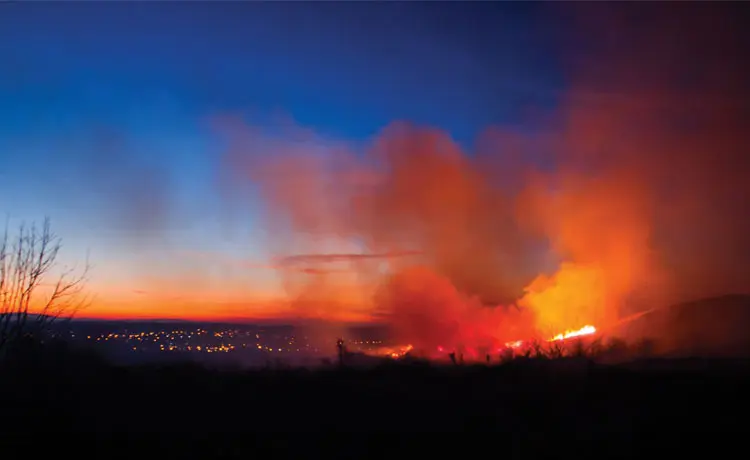Hot summer weather brings the dry conditions and drought that make vegetation very flammable, increasing the risk of wildfires. Make sure your community is prepared ahead of time and that your citizens also know what to do during and after a wildfire.
In 2017, there were more than 71,000 wildfires in the U.S. They are most common in the West but can happen in any state.
Before a Wildfire Strikes: The 3 Ps
- Prevention
The majority of wildfires are started by people – careless disposal of lit cigarettes or losing control of campfires or debris that’s being burned. Teach your community about local fire laws and safe fire activities.
- Protection
Learn about fire adapted communities, and instruct your citizens how to protect their homes. Some examples:
- When landscaping, create a defensible space, such as by keeping flammable plants a certain distance from the house and from each other.
- Use materials that won’t burn for the house’s roof, siding and decks.
- Preparedness
Preparedness is key! Make sure your citizens are well versed in what to do if there’s a wildfire. Check the National Weather Service fire weather outlooks to see what the current risk is in your area. Things people should do immediately:
- Know where to get local emergency alerts.
- Understand the community’s evacuation plan and know what routes to take.
- Draw up a personal home escape plan, including pets and livestock, and practice it with family members at least twice a year.
- Build a disaster supply kit with items needed in case of evacuation and keep it handy.
- Plan where family and pets/livestock could stay outside the area.
- Make sure home insurance coverage for wildfires is adequate.
Did you know? The NFPA promotes a National Wildfire Community Preparedness Day every year in May. If your community didn’t participate this year, organize a preparedness day now. Get some ideas for projects here.
If a wildfire is approaching, but evacuation orders haven’t been issued yet, there are things people can do to protect their homes. Here are some tips:
- Close outside vents (attic, eave, basement), windows, doors, pet doors, etc.
- Close all doors inside the house.
- Remove flammable curtains.
- Close all shutters, blinds or heavy noncombustible window coverings.
- Move flammable furniture into the center of the house, away from the windows and sliding glass doors.
- Shut off any natural gas, propane or fuel oil supplies at the source.
- Connect a garden hose to the outdoor water faucet and fill the pool, hot tub, garbage cans, tubs or other large containers with water.
- Place lawn sprinklers on the roof and have them going for as long as possible.
When a Wildfire Strikes
Make sure your community understands it is vital to evacuate immediately when advised to do so, but provide information on what a family can do if they are trapped in their home:
- Call 911.
- Turn on a light in every room so the house will be more visible in heavy smoke.
- Close all doors, but don’t lock them.
- Stay inside, away from outside walls and move flammable furniture into the center of the room, away from windows.
- Keep all family members and pets together and remain calm.
People can find the location of emergency shelters by texting the word SHELTER plus their zip code to 43362.
Precautions After a Wildfire
Your citizens may be anxious to get back to their homes, but stress the importance of waiting until the “all clear” has been given by the fire department or other officials. Brief people on the potential hazards that can await them when returning to their homes:
- Unstable burnt trees or power poles
- Live power lines on the ground
- Lit embers and holes filled with hot ash
- Gas leaks
- Structural problems with the house
- Water that isn’t safe to drink
Learn what to do if there are other consequences of wildfires, such as landslides or floods.
For more information on various disaster preparedness products to purchase for your community, browse the QuickSeries® library of guides, including Be Fire Smart: Wildfire Preparedness.
